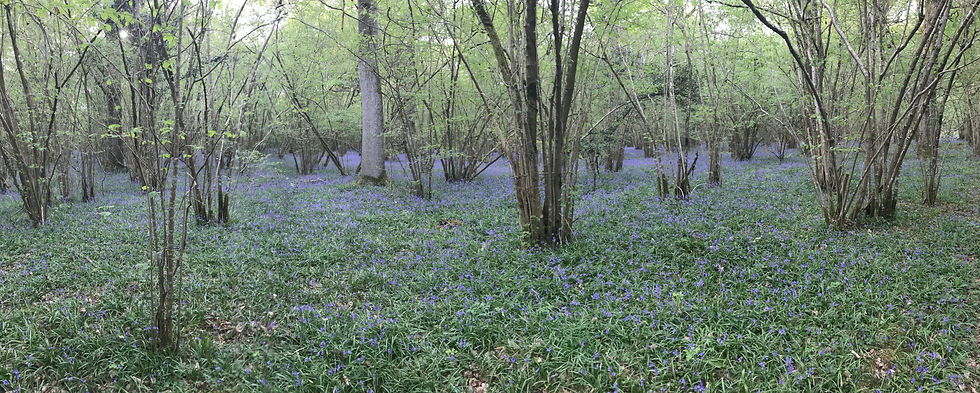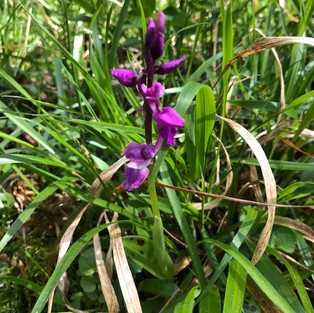Wildlife Wednesday's
- Stop The Loxwood Clay Pit

- Apr 14, 2021
- 3 min read
Catch up with the last few weeks of Wildlife Wednesday's, part of the SussexSpringWatch programme. Want to join in the conversation? Just join our FaceBook Group or to catch the main news by following our FaceBook Campaign Page.
We hope you enjoy this glimpse into the diverse wildlife of the woodlands, if you'd like to help us fight to protect the area from any potential development, please consider a donation to our new crowdfunding campaign.
WHY?
This week for #SussexSpringWatch, #WildlfeWednesdays simply asks the question WHY?
Many of you will have seen the article on : "UK woodlands 'at crisis point' amid wildlife decline" posted on the BBC News website today.
So why potentially inflict damage on a beautiful woodland habitat by digging away layers soil to expose and operate a clay pit and waste recycling facility? Why potentially pollute an area renowned for its peace and tranquility with noise and toxins from heavy machinery and HGV’s? Why potentially interfere with the ecosystems of old and ancient woodland when clearly more woodland is needed?
It simply doesn’t make sense!! As all of the people who love these woods, as evidenced by the wonderful photographs on our FaceBook groups, agree!! As does Dr. Tony Whitbread, on a recent visit to Pallinghurst Woods in this powerful video.
So please spread the word, join and support us to oppose such a potential travesty:
Spot the Difference!
How do you tell the difference between a native and a Spanish bluebell?
The recognisable flowers of the bluebell carpet our woodlands in an enchanting sweep of purple every year - a nature spectacle not to be missed. At a glance, native and Spanish bluebells can easily be dismissed as being the same, but a closer look reveals some easy to spot differences that will let you distinguish between the two easily.
Our native bluebell, named common bluebells, English bluebells, British bluebells, wood bells, fairy flowers and wild hyacinth, is an early flowering plant that naturally occurs in the UK. It appears in ancient woodlands and along woodland edges in April and May. Millions of bulbs can exist in just one wood, giving rise to the violet-blue ‘carpets' that are such a springtime joy to walk through. This early flowering allows them to make the most of the sunlight that is still able to make it to the forest floor habitat, before the canopy becomes too thick. Native bluebells are protected in the UK under the Wildlife and Countryside Act, 1981. Native bluebells have:
narrow leaves, about 1-1.5cm wide
deep violet-blue (sometimes white), narrow, tubular-bell flowers, with tips that curl back
flowers on one side of the stem
distinctly drooping stems
a sweet scent
cream-coloured pollen inside
The Spanish bluebell was introduced into the UK by the Victorians as a garden plant, but escaped into the wild – it was first noted as growing ‘over the garden wall’ in 1909. It is likely that this escape occurred from both the carefree disposal of bulbs and pollination. Today, the Spanish bluebell can be found alongside our native bluebell in woodlands and along woodland edges, as well as on roadsides and in gardens. Spanish bluebells have:
broad leaves, about 3cm wide
pale blue (often white or pink), conical-bell flowers, with spreading and open tips
flowers all around the stem
upright stems
no scent
blue- or pale green-coloured pollen inside
Bluebells are already being spotted in Pallinghurst Woods. Soon we'll see the wide carpets across all the woodland. Let’s see if you can spot the difference!!

CAN YOU HEAR THE NIGHTINGALES SING?
Nightingales arrive in our woodlands in April and sing until late May and early June. They leave again from July to August to go to warmer climes. Whilst they are nest building or raising young they are afforded full protection under the Wildlife and Countryside Act 1981.
Nightingales are slightly larger than robins, have a robust body and are broad-tailed. They also have a rather plain brown appearance perhaps considered dull. They are skulking and difficult to see as they lurk in bramble thickets. They are also very local in their distribution in the UK with most occurring in Kent but luckily our area contains the second highest density of this wonderful bird.
The famous song is of a high quality, with a fast succession of high, low and rich notes that few other species can match. They can be heard singing throughout the day, as well as at night.
The nightingale’s sweet song has inspired musicians, writers and artists around the world. Passionate conservationist, renowned musician and folk expert Sam Lee tells the full story of the nightingale in his book of the same name. Read his interview in the Guardian.
So when you are next on your walk, listen carefully and let us know if you hear a nightingale sing!
We hope you enjoyed this glimpse into the diverse wildlife of the woodlands, if you'd like to help us fight to protect the area from any potential development, please consider a donation to our crowdfunding campaign.










Comments